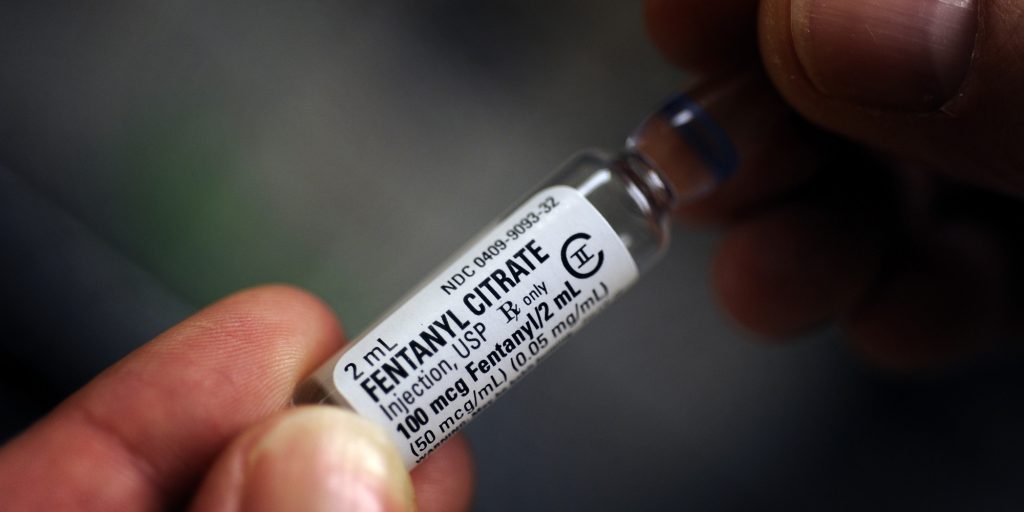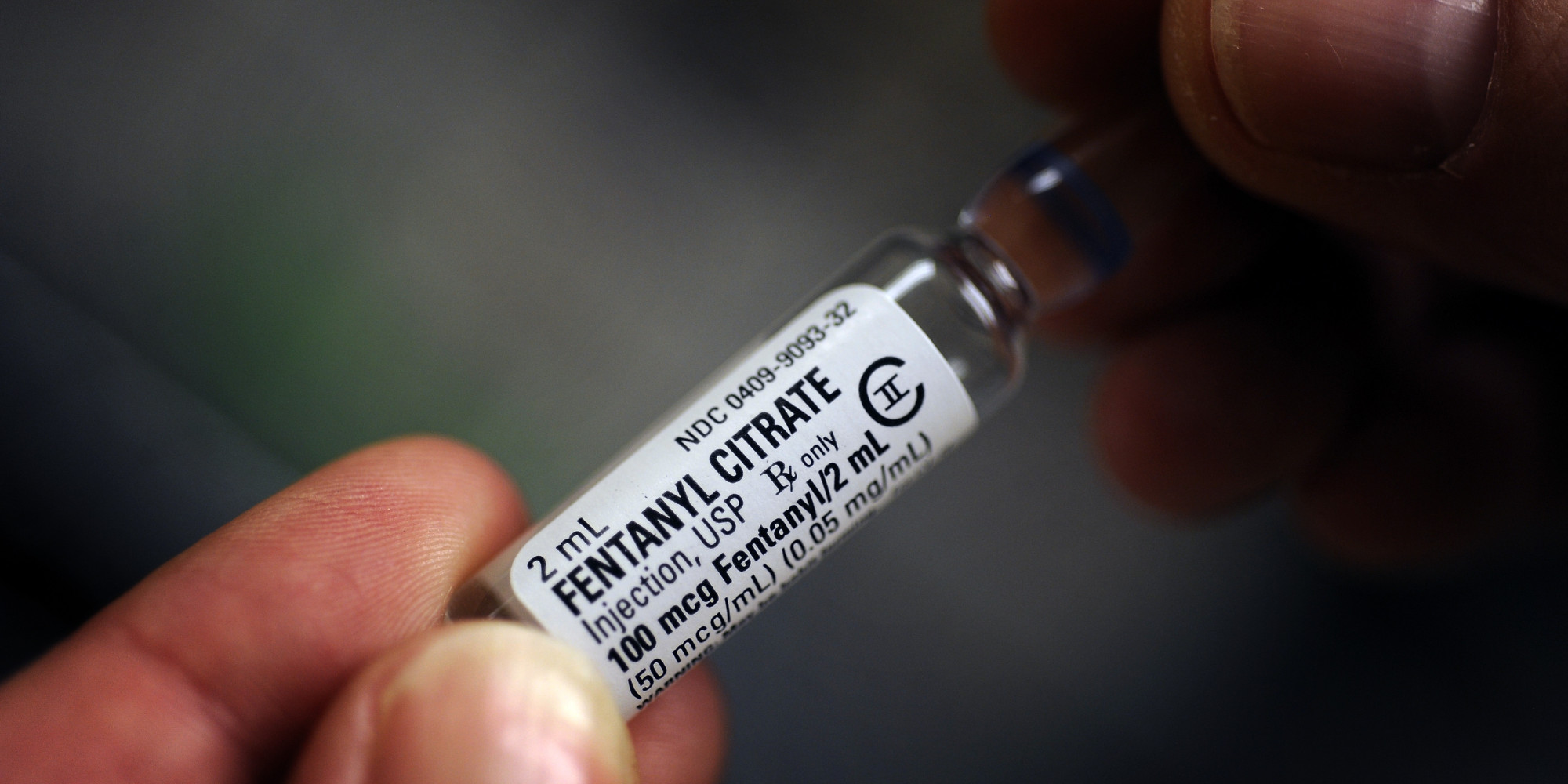New Castle – An alarming increase in fentanyl-related overdose deaths in 2016 drove the total number of fatal overdoses in Delaware past 300, with fentanyl-related deaths divided among fentanyl alone and fentanyl mixed with cocaine or heroin, or both, according to figures released by the Division of Forensic Science.
 Through toxicology analysis, the Division of Forensic Science confirmed the presence of fentanyl in more than a third of the 308 total fatal overdoses for 2016. Fentanyl is a synthetic painkiller that is up to 50 times more potent than heroin. In the 120 fentanyl-related deaths, fentanyl alone was confirmed in 51 cases, cocaine also was present in 48 cases, and heroin was confirmed in 37. In 16 cases, heroin and cocaine were both confirmed positive, in addition to fentanyl.
Through toxicology analysis, the Division of Forensic Science confirmed the presence of fentanyl in more than a third of the 308 total fatal overdoses for 2016. Fentanyl is a synthetic painkiller that is up to 50 times more potent than heroin. In the 120 fentanyl-related deaths, fentanyl alone was confirmed in 51 cases, cocaine also was present in 48 cases, and heroin was confirmed in 37. In 16 cases, heroin and cocaine were both confirmed positive, in addition to fentanyl.
In all of 2015, there were 42 overdose deaths involving fentanyl in Delaware.
The Centers for Disease Control and Prevention reported death rates from synthetic opioids, including fentanyl, increased 72 percent from 2014 to 2015. In Delaware, the number of fentanyl-related deaths soared by 180 percent from 15 deaths in 2012 to 42 deaths in 2015. From 2015 to 2016, the rate almost tripled, increasing by 186 percent.
Department of Health and Social Services (DHSS) Secretary Dr. Kara Odom Walker, a family physician, urged individuals in active substance use to see a medical provider immediately or call DHSS’ 24/7 Crisis Services Helpline to be connected to addiction treatment options. In New Castle County, the number is 1-800-652-2929. In Kent and Sussex counties, the number is 1-800-345-6785.
“As a physician, I have seen the toll that addiction takes on individuals and their families, and I have personally seen the effects of dangerous combinations with fentanyl, heroin and cocaine,” Secretary Walker said. “Even one use of an illicit drug can be lead to overdose and death, but the added presence of fentanyl dramatically increases those risks. We hope that those affected will talk with a provider to help individuals get connected to treatment for this disease.”
Drug dealers sell fentanyl in a variety of ways, according to the Drug Enforcement Administration (DEA). Dealers sell pure fentanyl in white powder form to users who assume they are buying heroin. They lace fentanyl with cocaine or heroin. And they press fentanyl into pills and pass them off as OxyContin.
“Too many times, our police officers and other first responders see first-hand the dangers of fentanyl-related overdoses,” Department of Safety and Homeland Security (DSHS) Secretary Robert Coupe said. “That’s why we encourage anyone who is using or suffering from addiction to call for help or to ask a police officer, a medical professional or another first responder for help. Our first priority is to save lives.”
Individuals and families can visit DHSS’ website, www.HelpIsHereDE.com, for addiction treatment and recovery services in Delaware and nearby states. If individuals see someone overdosing, they should call 911. Under Delaware’s 911/Good Samaritan Law, people who call 911 to report an overdose and the person in medical distress cannot be arrested for low-level drug crimes.
“AtTAcK addiction continues to work with the Division of Public Health so that a standing order is instituted allowing the life-saving medication, naloxone, to be purchased in pharmacies throughout Delaware after the consumer undergoes a brief training,” atTAcK addiction board member Dave Humes said. “We are hoping to see expansion and approval of newer manufacturers of the medication. This will help combat price increases. We now have close to half of all Delaware departments of peace officers trained and carrying naloxone, including the Delaware State Police, resulting in more lives saved. We must find a better way to inform those people still in active use of the dangers that fentanyl poses not only to their health, but also to their life, and the impact their substance use disorder has on their loved ones.”
Of the 120 fentanyl-related overdose deaths in 2016, the Division of Forensic Science reported 68 deaths (57 percent) occurred in New Castle County, with 36 deaths (30 percent) in Sussex County and 16 deaths (13 percent) in Kent County.
Ninety-six of the 120 fentanyl-related overdose deaths (80 percent) involved men. The ages ranged from 17 to 64, with 71 of the 120 deaths (59 percent) involving individuals in their 30s and 40s, and the average age slightly above 38.
In 2015, a total of 228 people died from overdoses in Delaware, with 222 overdose deaths reported in 2014, according to the Division of Forensic Science. Nationwide, the CDC reported 47,055 people died from drug overdoses in 2014, or 1.5 times greater than the number killed in car crashes.
When a user ingests fentanyl or a drug laced with fentanyl, it affects the central nervous system and brain. Because it is such a powerful opioid, users often have trouble breathing or can stop breathing as the drug sedates them. If someone is too drowsy to answer questions, is having difficulty breathing, or appears to be so asleep they cannot be awakened, call 911 immediately. Naloxone, the overdose-reversing medication carried in Delaware by community members, paramedics and some police officers, can be administered in overdoses involving fentanyl. Because fentanyl is more potent than heroin or opioid painkillers, multiple doses of naloxone may be needed to reverse an overdose. In 2016, Delaware paramedics and police officers administered naloxone 2,334 times in suspected overdose situations.
“We know that 80 percent of people who are addicted to opioids started with prescription painkillers,” said Division of Public Health Director Dr. Karyl Rattay. “The safest course is to avoid prescription painkillers altogether or to use them at the lowest possible dose for the shortest period of time. Opioids become less effective over time so people may feel compelled to take higher doses to get the same results or even seek out illegal sources such as heroin. For those in the throes of addiction, please seek help through your primary care doctor, another medical professional or directly through an addiction treatment center. Addiction can be treated and people do live fulfilling lives in long-term recovery.”
In the spring, the Department of Health and Social Services (DHSS) will initiate a community outreach campaign in support of its www.HelpIsHereDE.com website. The campaign will include the unveiling of the revamped website, making it easier to navigate and find information, and new resources and materials on addiction prevention, treatment, and recovery. In addition, DHSS will develop materials for medical providers on prescribing pain medications and information on how to screen patients and connect them with addiction treatment resources, as well as materials on preventing substance exposure in infants.
Source: Delaware Department of Health and Social Services

